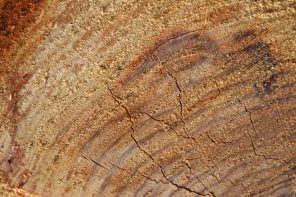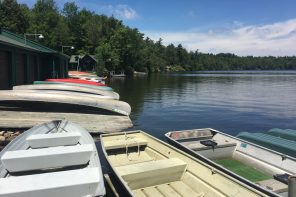We gathered around the television as the news helicopter broadcast images of the Van Norman dam, damaged in the recent earthquake. Civil engineers were attempting to drain the 3.6 billion gallons of water that threatened to become a tidal wave. As the helicopter moved away from the dam we caught a glimpse of our home, located 2.5 miles south of the dam in the San Fernando Valley, California.
My parents, my four siblings, and I anxiously watched at my grandparents’ home, waiting to be allowed to return to our house, which we were ordered to evacuate shortly after the earthquake struck in February, 1971. I was 12 years old and the eldest of five children.
The 6:00 a.m. quake registered a magnitude of 6.6 on the Richter scale and began with a hard, loud jolt that woke us up. It was followed by 10 seconds of vigorous shaking. The whole event lasted merely 11 seconds, but caused extensive damage across the northern communities in the valley, including dismantling a recently constructed highway overpass. The VA hospital close to the quake epicenter was demolished and 64 people died.
An hour after the earthquake, which was followed by scores of aftershocks, we were cleaning up the broken glass and dishes and re-shelving books when the police drove around our neighborhood, broadcasting via bullhorn: “The dam is about to break. You must leave your house immediately. This is a mandatory evacuation.”
Assuming we would be back home by nightfall, we grabbed what we considered our essentials for that day. I grabbed the family photo albums and my grade school diaries while one sister grabbed a loaf of bread and my brother picked up our dog and her food.
We drove our white Dodge van two miles south of our home and gathered with other evacuees at the school where my father taught. Soon the police rolled into the parking lot and told everyone to leave that area as well.
“If that dam breaks, we will have tidal wave across the northwest end of the valley to the middle of it,” they said. “You need to get far away from here. This is mandatory.”
So we went to my grandparents’ home on the southeast side of the valley, a goodly distance from the evacuation zone, and waited until we could return home. Ultimately, more than 80,000 people left their homes and it took three days to pump enough water out of the dam before it was deemed safe enough for the residents to return.
According to news reports, if the earthquake had hit a year earlier when the dam held back 6.5 billion gallons of water, it would have immediately collapsed, killing more than 100,000 valley residents. We would have been among the first to die because of our close proximity to the dam.
My father returned to our house the day after we left to get some medications, cloth diapers for my youngest sister, and additional clothing. He was stopped by the police who were patrolling the neighborhoods to catch potential looters and had to show his driver’s license to prove he belonged there. When my father returned he told us about how he broke down into tears with the police officer, begging the officer to let him go home. He was a high school football coach who rarely cried, and I was surprised when he admitted to crying in front of the police.
A few days later my father returned again to our house, this time with my mother and grandfather. According to my mother, it was eerie and unsettling to drive down our street and not hear any noise, to see tricycles and wagons left in front yards.
During the three days we spent at my grandparents’ two-bedroom home, we passed our time playing in their big backyard, reading, and watching television, especially the local news. I dreamed of the new wardrobe I could purchase with the insurance money if our home was destroyed. My mother did not appreciate my wardrobe dreams.
By seventh grade I had been around bodies of water before—the Pacific Ocean, lakes, public pools—and knew how to swim. I was not afraid of water although I was cautious: I knew to be aware of the deep end, practice pool safety, and wait an hour after eating before entering the water. I was confident and self-assured in my relationship with water. It never occurred to me that water could control my circumstance, could act independently of human activity and be an arbitrary, powerful force.
I haven’t made those assumptions since the Van Norman dam almost burst.




